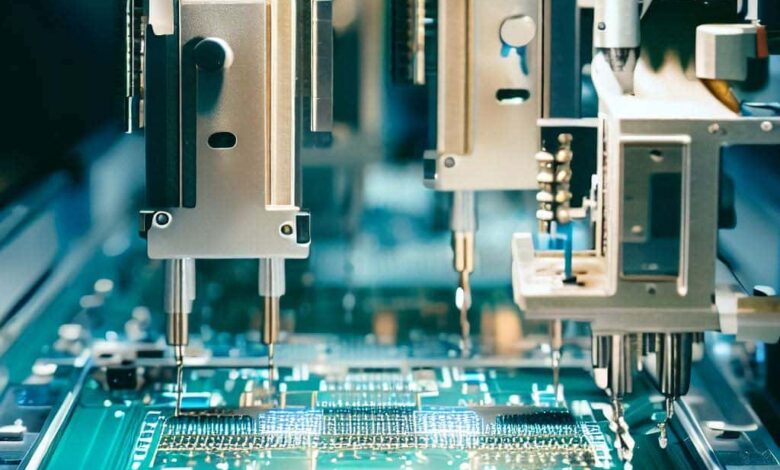Advancing Efficiency: The Role of Industrial Automation in PCB Assembly

In the fast-evolving world of electronics manufacturing, industrial automation has emerged as a cornerstone, particularly in the realm of Printed Circuit Board (PCB) assembly. As demand for smaller, faster, and more complex electronic devices continues to rise, the industry increasingly turns to automation to meet these challenges. This article explores the critical role of industrial automation in PCB assembly, its benefits, challenges, and the future landscape of this technology.
Understanding PCB Assembly
PCB assembly is the process of mounting electronic components onto a printed circuit board. This process is integral to the manufacturing of electronic devices, ranging from simple gadgets to complex machinery. The assembly involves several steps, including solder paste application, component placement, soldering, and inspection. Traditionally, these tasks were performed manually, requiring a high level of precision and skill. However, as technology has advanced, so too has the complexity of PCBs, necessitating more efficient and accurate methods—hence the shift toward industrial automation.
The Rise of Industrial Automation in PCB Assembly
Industrial automation refers to the use of control systems, such as computers or robots, to handle different processes and machinery in manufacturing. In PCB assembly, automation has revolutionized the industry by significantly enhancing speed, precision, and consistency. Automated machines can work 24/7 without fatigue, ensuring continuous production and reducing the likelihood of human error. This capability is particularly valuable in high-volume production environments where even minor errors can lead to significant financial losses.
Key Components of Automated PCB Assembly
- Solder Paste Printing: The first step in automated PCB assembly is the application of solder paste to the board. This is typically done using a stencil printer, which ensures precise and consistent application of the paste. Automation in this stage minimizes the risk of misalignment or insufficient paste, which can lead to defects later in the assembly process.
- Pick and Place Machines: These machines are at the heart of automated PCB assembly. They are responsible for placing components onto the board with high precision. Modern pick-and-place machines can place thousands of components per hour, far outpacing human operators. They also offer remarkable accuracy, essential for placing tiny components on densely packed boards.
- Reflow Soldering: Once the components are placed, the PCB goes through a reflow oven, where the solder paste is melted to create electrical connections between the components and the board. Automated reflow soldering ensures that the board is heated evenly, reducing the risk of soldering defects such as cold joints or bridging.
- Automated Optical Inspection (AOI): After soldering, the PCB undergoes inspection to detect any defects. Automated Optical Inspection (AOI) systems use cameras and image processing software to quickly and accurately identify issues such as misplaced components, soldering defects, or open circuits. This stage is crucial for quality control and ensuring that defective boards do not move on to the next stage of production.
Benefits of Automation in PCB Assembly
The integration of automation in PCB assembly offers numerous advantages:
- Increased Efficiency: Automated systems can operate at high speeds, significantly increasing production throughput. This efficiency is essential for meeting tight production deadlines, especially in industries where time-to-market is critical.
- Enhanced Precision: The precision of automated systems is unmatched by manual processes. This is particularly important as PCBs become smaller and more complex, with components that are difficult to place by hand.
- Consistency: Automation ensures that every board is assembled in the exact same way, reducing variability and ensuring consistent quality across batches.
- Cost-Effectiveness: While the initial investment in automation technology can be high, the long-term savings are substantial. Automation reduces labor costs, minimizes material waste, and lowers the likelihood of costly rework due to defects.
- Scalability: Automation allows manufacturers to scale up production quickly in response to increased demand, without compromising on quality or efficiency.
Challenges and Considerations
Despite its many advantages, the adoption of automation in PCB assembly is not without challenges. The high initial cost of equipment and the need for skilled personnel to operate and maintain these systems can be a barrier for some manufacturers, particularly smaller firms. Additionally, as PCB designs become more complex, there is a growing need for automation systems that can handle these intricacies without compromising on speed or accuracy.
Another consideration is the integration of automation with existing manufacturing processes. Companies must ensure that new automated systems can seamlessly integrate with their current workflows and that they have the infrastructure in place to support these advanced technologies.
The Future of PCB Assembly Automation
Looking ahead, the future of industrial automation in PCB assembly is bright. Advances in robotics, machine learning, and artificial intelligence are expected to further enhance the capabilities of automated systems. For instance, the development of smarter robots and more sophisticated AI-driven inspection systems could lead to even greater efficiencies and higher levels of quality control.
Moreover, the trend toward Industry 4.0—characterized by the integration of digital technologies into manufacturing—will likely accelerate the adoption of automation in PCB assembly. As manufacturers seek to create more connected, intelligent, and flexible production environments, automation will play an increasingly central role.
Conclusion
Industrial automation is transforming PCB assembly, offering manufacturers the tools they need to meet the demands of modern electronics production. By enhancing efficiency, precision, and consistency, automation is helping the industry keep pace with the rapid evolution of technology. As the field continues to advance, we can expect even greater innovations that will further revolutionize PCB assembly and electronics manufacturing as a whole.



